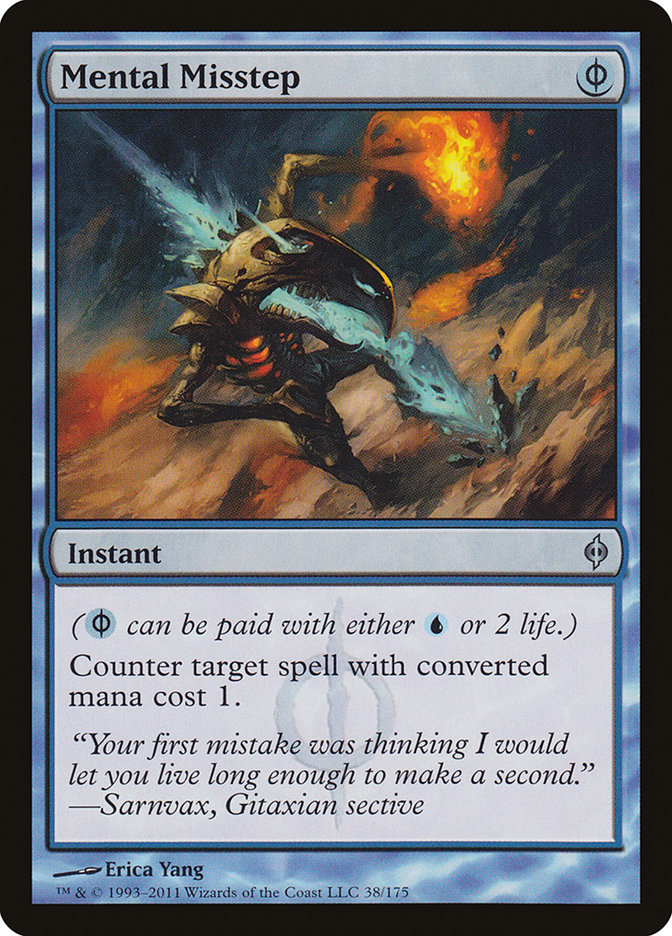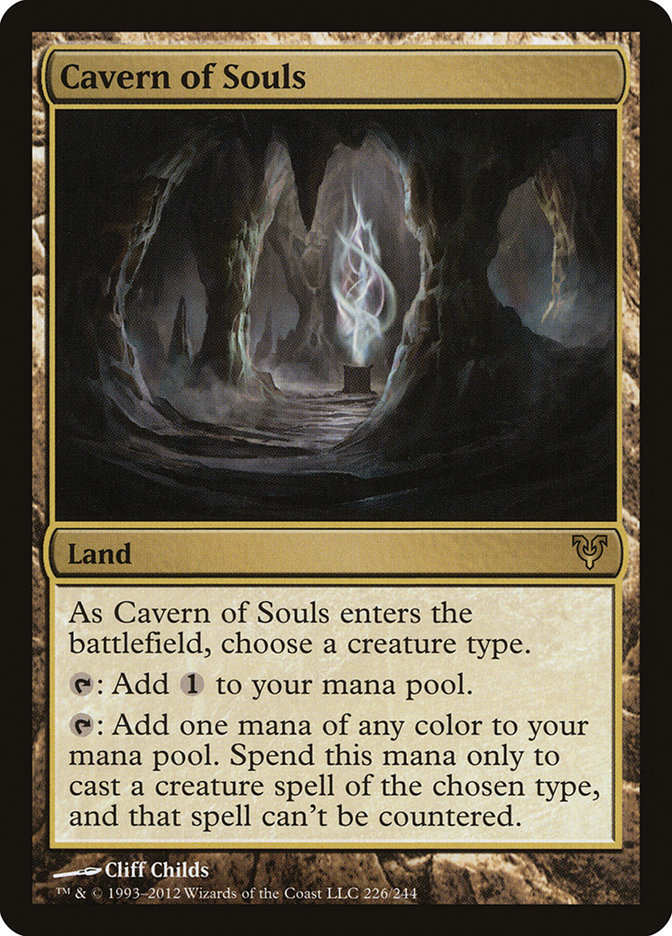Greetings my friends. We gather here today to mourn the death of a friend—one who fought the good fight, punishing blue decks and their filthy Counterbalances and Force of Wills while at the same time providing tutoring and card draw that would make even them envious. While powerful and capable of doing degenerate things, in the end fighting fair was always the name of the game. Woefully misunderstood by most and loved by those closest, time has finally caught up.
I guess it would be best to start at the beginning.
The year was 2005, and after a few years of serious Limited play, I was just starting to get into the Constructed side of the game. The season was Extended, and I had been playing a really awesome version of Affinity featuring Fling and Atog that could kill on turn 3. It was fun and I made top 8 of a PTQ or two, but the real hero of the season was my buddy Charles Glass.
Charles was the original Goblin master.
Creatures (34)
- 4 Mogg Flunkies
- 4 Mogg Fanatic
- 4 Goblin Matron
- 4 Goblin Warchief
- 1 Sparksmith
- 1 Goblin Sharpshooter
- 4 Goblin Piledriver
- 2 Gempalm Incinerator
- 1 Siege-Gang Commander
- 4 Goblin Ringleader
- 4 Skirk Prospector
- 1 Goblin Pyromancer
Lands (22)
Spells (4)
Sideboard

(Some amusing side notes about this particular PTQ: there were four Goblin decks in the Top 8, and Michael Clair took it down with a Psychatog deck that featured four [!!!] maindeck Engineered Plagues. Aside from that the Top 8 also featured an awesome Sneak Attack deck and SCG’s own Patrick Sullivan playing Psychatog. Just kidding, he was playing Red Deck Wins.)
Charles made Top 8 of five PTQs that season, and watching him play the deck was a joy because he really understood it. He would hold his Goblin Piledrivers turn after turn until he could induce his opponent to lower their defenses and play the sandbagged Drivers with a Goblin Warchief out and steal the game. He was excellent at understanding how to use his Rishadan Ports and Wastelands and understood when he needed to be aggressive and when he needed to play a more controlling game.
Most important of all though was the amount of faith he had in the deck. He played the deck with an absolute confidence and understood when he needed to keep somewhat speculative hands or take risky lines and just trust that the deck would do its thing—this is the most important thing I gained from watching him play. I watched him crush PTQ after PTQ while I slogged along with my Affinity deck, but I was unwilling to give it up (foreshadowing much?).
Finally, for the last PTQ of the season, I decided to put the robots on the shelf and give Goblins a spin.
The rest, as they say, is history.
I would end up losing an unfortunate match in Top 4 of the PTQ, but I was hooked. Unfortunately Extended was about to become a dead format, and if I was going to continue to play it, things were going to have to change. The first PTQ in the new Extended format was going to happen on the exact same weekend as the Pro Tour debut of the format at Pro Tour Los Angeles 2005, which meant that for that PTQ and that PTQ alone there would be literally no decklists at all; all of the pro teams testing for the event were obviously tightlipped.
So what was I to do? Just brew it up!
Creatures (36)
- 4 Goblin Matron
- 1 Goblin King
- 4 Goblin Warchief
- 1 Sparksmith
- 1 Goblin Sharpshooter
- 4 Goblin Piledriver
- 4 Gempalm Incinerator
- 1 Siege-Gang Commander
- 4 Goblin Ringleader
- 4 Skirk Prospector
- 4 Goblin Sledder
- 1 Goblin Pyromancer
- 3 Goblin Legionnaire
Lands (21)
Spells (3)
Sideboard

Looking back on this list is pretty funny. It wasn’t clear yet that fetch lands into Ravnica dual lands is actually better than pain lands, so I had a full set of Battlefield Forges. We needed a two-mana goblin to replace Mogg Flunkies, and Goblin Legionnaire fit the bill. Adding white also gave us the Disenchant effect we needed (most old Extended lists ran green for Naturalize) while also giving us a brutal sideboard card versus one of the few obvious decks left in the format in Affinity.
Just like that I stamped my ticket to my first Pro Tour.
I would play in every Pro Tour that season, but after a disastrous finish at Worlds 2006 in Paris saw me fall two pro points short of making Level 3 (the equivalent of Gold now), I was back to PTQing. I can’t even remember what I played for those first few PTQs, but for one of them my good buddy Jesse Hughes came along for the ride and wanted a deck. Some storm-based Goblin decks utilizing Empty the Warrens and Rite of Flame / Seething Song had done well at Worlds, so I whipped him up a list. He did fairly well at the PTQ, and I decided to give the deck a spin myself.
While I quickly discarded the Empty the Warrens package, I was amazed with how well Rite of Flames played in conjunction with Chrome Mox. Turn 1 Goblin Warchief was not uncommon, and it was by far the fastest version of the deck I had ever played. The deck had a pretty simple turn 3 kill that I would pull off many times: turn 1 land, Chrome Mox, Goblin Piledriver; turn 2 land, Goblin Warchief, attack; turn 3 land, Goblin Matron for Goblin Piledriver, Goblin Piledriver, attack for lethal.
I worked on it on Magic Online for a while and then brought it to a PTQ in New Jersey under somewhat interesting circumstances.
My old band P.L.M.B. had a show in New York City that night at 10:00 PM, and I decided to risk it. I figured that if I did bad I’d make it to the show and if I actually won the PTQ I might be late but it would be worth it. So under those circumstances, what do you think the worst possible outcome to this tournament would be?
Yep, you guessed it—I lost in the finals.
I just barely made it to the show in time, and my band mates were not too thrilled with me. Regardless, the show went pretty sweet:
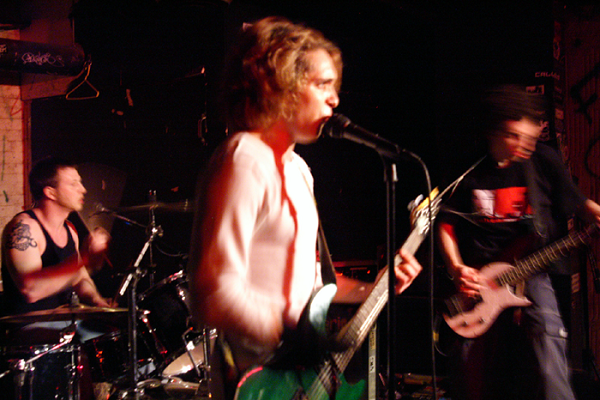
The next weekend I was on a plane with my good buddy Gerard Fabiano headed to Dallas, Texas for a Grand Prix. I had continued to work on the deck all week on Magic Online, and I felt extremely prepared for the event. On the flight Gerard and I were playing games across the vacant middle seat, and I had one of my two lifetime turn 2 kills with the deck:
Turn 1: Mountain, cast Rite of Flame, cast Rite of Flame, play Goblin Warchief, play Goblin Piledriver, and attack for five.
Turn 2: Draw and cast Rite of Flame, play Goblin Matron, get Goblin Piledriver, play Goblin Piledriver, and attack for seventeen.
The Rite of Flames and Chrome Moxes weren’t quite Aether Vials, but they made the deck much more explosive and helped make up for the loss of Wasteland and Rishadan Port.
Creatures (33)
- 4 Goblin Matron
- 1 Goblin King
- 4 Goblin Warchief
- 1 Goblin Sharpshooter
- 4 Goblin Piledriver
- 3 Gempalm Incinerator
- 1 Siege-Gang Commander
- 4 Goblin Ringleader
- 4 Skirk Prospector
- 3 Goblin Sledder
- 4 Mogg War Marshal
Lands (19)
Spells (8)

This was probably the hardest I had ever worked on a deck, and it was beautiful. I had a plan for every matchup, right down to the Pendelhaven in the sideboard. Many people questioned me about that after the event, but the plan against any attrition-based matchup was to board out all four Rite of Flames, which required another land. Pendelhaven did tons of work with all of the random 1/1 Goblins and made the most important part of any attrition-based matchup (blocking) so much easier. The Ghost Quarters also did a very nice Wasteland impression, as it helped break up the Urza’s lands as well as being an actual Wasteland versus some of the combo decks in the format with no basic lands. This deck was probably my finest work.
Sadly I lost in a very tight three games to Kenji Tsumura in Top 8, where I made a mistake in game 3 that likely cost me the game and the match. I miscounted on an all-in attack, and the convoluted line I had to take ended up being one damage short of optimal. While I still would have had to draw out at the end to beat him, I significantly reduced my outs by leaving him at two life instead of one. If I had beaten him, I had good matchups the rest of the way through and might have taken it down.
Regardless, this event got me back on the train for my next few Pro Tours. I would play Goblins again at Pro Tour Valencia, also known as Pro Tour Flood, but fall a win short of making day 2.
Once again I was back on the PTQ grind.
Creatures (36)
- 4 Mogg Fanatic
- 4 Goblin Matron
- 4 Goblin Warchief
- 2 Goblin Sharpshooter
- 4 Goblin Piledriver
- 4 Gempalm Incinerator
- 1 Siege-Gang Commander
- 4 Goblin Ringleader
- 4 Skirk Prospector
- 1 Tin Street Hooligan
- 4 Mogg War Marshal
Lands (20)
Spells (4)
Sideboard

This time I was experimenting with splashing black for some combo hate in Cabal Therapy and some proactive Engineered Plague hate in Dralnu’s Crusade. I would also experiment with Patriarch’s Bidding for some of the grindier matchups. Note the lack of Warren Weirding because it sucks and the extra Goblin Sharpshooter because Dredge and Elves were popular.
Moving on from Extended, I would finally play my second-ever Legacy event in 2009. My first was Grand Prix Philadelphia a few years prior, which Jon Sonne coincidentally won with Goblins but I did not make day 2 of. I was looking for a deck to play and amusingly enough ended up asking Owen Turtenwald for his list after he did well with Goblins in a recent event. Owen used to ask me for help with his Goblin lists on Magic Online all the time back in the day, and he was happy to return the favor.
Creatures (33)
- 4 Mogg Fanatic
- 4 Goblin Matron
- 4 Goblin Lackey
- 4 Goblin Warchief
- 1 Goblin Sharpshooter
- 4 Goblin Piledriver
- 4 Gempalm Incinerator
- 2 Siege-Gang Commander
- 4 Goblin Ringleader
- 2 Tin Street Hooligan
Lands (23)
Spells (4)
Sideboard

Owen did a good job on the list, and I found myself playing my last round for a potential Top 8 slot versus a Standstill based control deck. Game 1 I forced him to break his own Standstill with a combination of Rishadan Ports and Wastelands, and I took down the match and was ready to play Top 8 for the trophy at X-2-1.
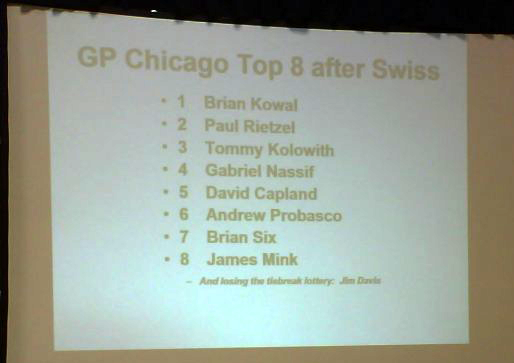
Nah, just kidding.
Despite the upset, the Top 16 qualified me for another Pro Tour in Honolulu, so I couldn’t complain too much.
Playing the deck in Legacy was awesome. Getting to play with Wasteland, Rishadan Port, and Aether Vial again was a dream come true, and the deck filled a perfect niche. Woefully misunderstood as a brainless red aggressive deck, the deck was actually a fantastic control deck. You drew a ton of cards and took control of the game with relentless card and resource advantage. The fact that the deck had powerful draws and could close out games quickly was just gravy.
But the absolute best part of the deck was how well it matched up against all manners of blue Brainstorm decks, which were the preferred decks of most of the better players at each event (I would crush Gerry Thompson at almost Legacy event ever to the point of being almost comical; <3 ya buddy, how’s WotC?). The deck had more than enough play to allow me to outmaneuver weaker players while giving me an edge when I needed it the most.
Once the SCG Open Series began to support Legacy, I got to enjoy playing the deck again often.
Creatures (33)
- 4 Goblin Matron
- 4 Goblin Lackey
- 4 Goblin Warchief
- 1 Goblin Sharpshooter
- 4 Goblin Piledriver
- 4 Gempalm Incinerator
- 2 Siege-Gang Commander
- 4 Goblin Ringleader
- 1 Skirk Prospector
- 1 Tin Street Hooligan
- 3 Mogg War Marshal
- 1 Goblin Chieftain
Lands (23)
Spells (4)
Sideboard

I made a number of Top 8s at Legacy Opens over the next few years, and the deck mostly remained the same. However, leading up to the 2011 Invitational in Indianapolis, the funeral bells would begin to ring again for Goblins with the printing of this card:
People immediately decried Mental Misstep as the end of Goblins as well as a number of other decks. Goblins was so reliant on its powerful one-drops in Goblin Lackey and Aether Vial that the ability for any deck to circumvent them for free even on the draw was thought to be far too much to overcome. I almost relented and was looking at other decks until a few important things became clear.
1. Mental Misstep was pushing most of the combo decks out of the format, and combo decks have always been Goblin’s one true weakness.
2. All of the decks playing Mental Misstep ended up being slow blue control decks, the exact kind of deck that Goblins has always preyed on.
Also, there was nothing really stopping me from playing Mental Misstep myself, so I just said f*** it. Good idea.
Creatures (31)
- 4 Goblin Matron
- 4 Goblin Lackey
- 4 Goblin Warchief
- 1 Goblin Sharpshooter
- 4 Goblin Piledriver
- 4 Gempalm Incinerator
- 2 Siege-Gang Commander
- 4 Goblin Ringleader
- 1 Skirk Prospector
- 1 Tin Street Hooligan
- 2 Mogg War Marshal
Lands (23)
Spells (6)
Sideboard

I decided to play two Mental Misstep myself and crushed a bunch of silly blue decks on my way to Top 8. Unfortunately I fell to Pat Cox in a close match in the finals, where amusingly enough if I had played a Volcanic Island in my deck and been able to actually cast Mental Misstep I might have won game 2 and the match.
The finish was very vindicating because I stuck to my guns and it paid off.
I would continue to play Goblins in Legacy Opens despite the fact that it really hadn’t gotten a new card since Mogg War Marshal. Finally, we got one:
Cavern of Souls made our very good matchup against blue decks even better, and for a while the deck saw a mild resurgence.
However, every other deck got wave after wave of good new cards. First it was Stoneforge Mystic and Batterskull, which was beatable with Tin Street Hooligan. Then came Emrakul, the Eons torn (and later Omniscience), which powered up the Show and Tell combo decks. After that Delver of Secrets gave blue decks a way to actually kill us quickly, which was often their biggest problem. Then came Deathrite Shaman, a Birds of Paradise almost any deck could play that for some unfathomable reason is a 1/2 and not a 1/1. After that the legend rule changed, and Elves got much more powerful Gaea’s Cradles and Craterhoof Behemoth. Then came Abrupt Decay.
Still, we endured. Matchups that were once very easy were still favorable, but we had to work harder and harder for each win.
Then they printed this guy:
Interestingly enough, I don’t think True-Name Nemesis is the death knell for Goblins directly. Rather it’s the format’s response to it that’s causing all the problems. Everyone is packing all sorts of Golgari Charms and Zealous Persecutions to deal with Nemesis, which happen to also be very good against us. They are also turning to larger Equipment packages that now include Sword of Fire and Ice, giving them three Equipment, and adding Delver of Secrets to their Stoneforge Mystic decks, which makes for an even faster clock. I even heard that Reid Duke played both Engineered Plague and Night of Souls’ Betrayal maindeck at the Invitational. What a scumbag!
The fact is that despite what people may or may not think Goblins was an extremely good Legacy deck a few years ago (provided it was being played very well—very few decks reward good play and punish bad play like Goblins does). But over the years the entire format has been catching up and getting sweet new toys to play with while our deck has largely remained the same. I used to say that when played optimally—which again is a difficult thing to do—the only things that could beat Goblins were good combo decks and Engineered Plague. The deck really was that good against any fair deck. But those lopsided matchups are long gone, and every match is a struggle. Sometimes the fight just isn’t worth fighting anymore.
It sucks to say, but I think this time it’s actually the truth.
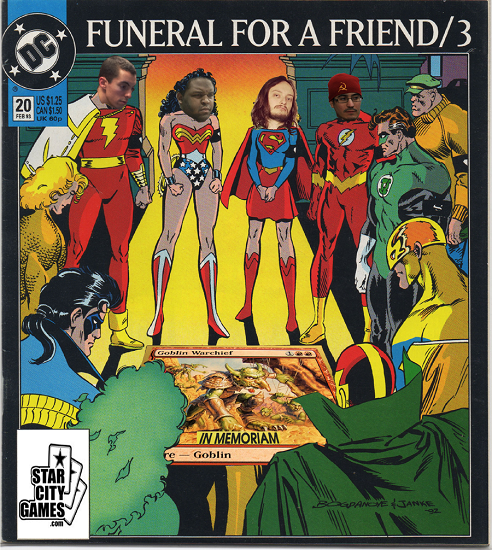
Despite my strong 7-1 finish at the Invitational in Standard we saw two articles ago, I absolutely bombed Legacy and went 1-6 before dropping and ending my misery. I almost played another deck—I really did—but I figured it would just work itself out like it had so many times in the past.
I was wrong.
It’s sad to hang my boys up. My Goblin cards have probably circled the globe five times over by now, and man are they beat to crap. I always told myself if I ever quit Magic the only thing I would keep is my Goblin deck. This is still true, but it will probably not be doing much more than collecting dust in the near future. I don’t think the deck is completely unplayable, but all of its edges are mostly gone.
Going forward, if you want to play the deck, I think that it has finally come to the point where I would advocate playing Tarfire. I’ve long spoken ill of it, but that was in a different time when Tarmogoyf was king and it wasn’t so paramount to kill a turn 1 Delver of Secrets or Deathrite Shaman or a turn 2 Stoneforge Mystic.
Here’s a suggested list if still you feel brave.
Creatures (30)
- 4 Goblin Matron
- 4 Goblin Lackey
- 4 Goblin Warchief
- 1 Goblin Sharpshooter
- 4 Goblin Piledriver
- 3 Gempalm Incinerator
- 1 Siege-Gang Commander
- 4 Goblin Ringleader
- 1 Skirk Prospector
- 2 Tin Street Hooligan
- 2 Mogg War Marshal
Lands (23)
Spells (7)

It’s hard to complain too much. My boys have done a lot of work for me over the years, and my faith has been rewarded many times over.
Devotion may have both helped me succeed and been my downfall in Las Vegas, but I look forward to a brave new world . . .
This card seems pretty sweet.

